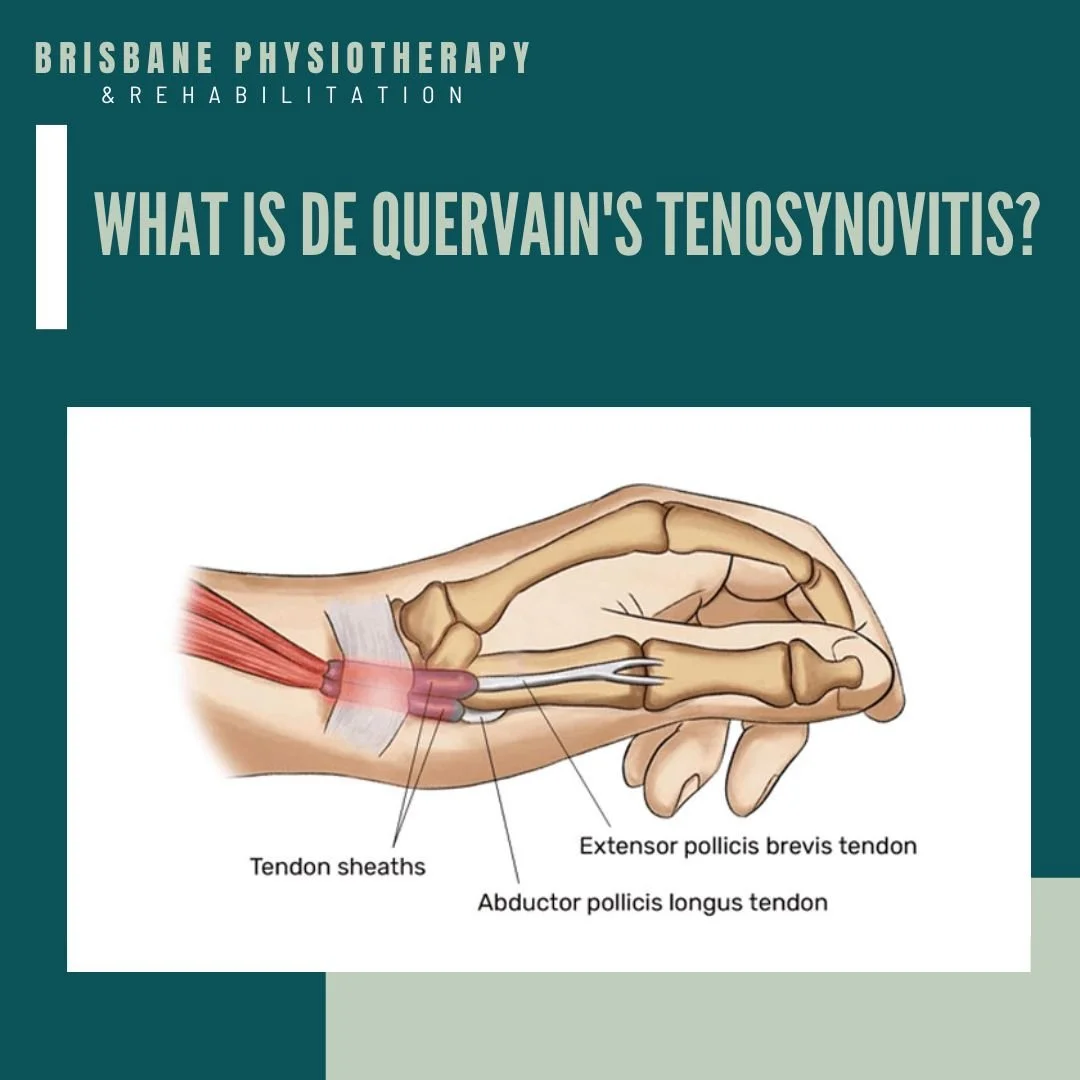What is De Quervain's Tenosynovitis?
What is De Quervain's Tenosynovitis?
De Quervain's tenosynovitis is a condition that affects the tendons at the base of the thumb, causing pain and discomfort during thumb and wrist movements. It is named after the Swiss surgeon Fritz de Quervain, who first described it in the early 20th century. Understanding the anatomy and function of the tendons involved is essential for recognizing the significance of this condition.
Anatomy of De Quervain's Tenosynovitis:
De Quervain's tenosynovitis involves two primary tendons:
Abductor Pollicis Longus (APL): This tendon helps move the thumb away from the palm (abduction).
Extensor Pollicis Brevis (EPB): This tendon aids in extending the thumb.
These tendons are encased in a protective sheath that allows them to glide smoothly during thumb and wrist movements.
Function of the Tendons:
The APL and EPB tendons play a crucial role in various hand and thumb movements, including:
Gripping: Engaging in activities that require grasping objects.
Pinching: Using the thumb and fingers to pick up small items.
Thumb Extension: Straightening the thumb away from the palm.
Common De Quervain's Tenosynovitis Issues:
De Quervain's tenosynovitis typically involves inflammation and irritation of the APL and EPB tendons and their surrounding sheath. This can result from repetitive thumb and wrist movements or trauma. Common issues associated with De Quervain's tenosynovitis include:
Pain and Tenderness: Individuals often experience pain and tenderness at the base of the thumb and along the wrist's radial side.
Swelling: Swelling may occur in the affected area.
Difficulty Gripping: Pain and discomfort during gripping or pinching activities.
Catching or Snapping Sensation: Some individuals may feel a catching or snapping sensation when moving the thumb.
De Quervain's Tenosynovitis Treatment
De Quervain's Physio Management Strategies
Rest and Immobilization:
Thumb Splint: Wearing a thumb splint or brace can help immobilize the thumb and wrist, reducing strain on the affected tendons. This is particularly important during activities that exacerbate symptoms.
Ice Therapy:
Cold Compress: Applying a cold compress or ice pack to the affected area can help reduce inflammation and provide pain relief. Use it for 15-20 minutes at a time, several times a day.
Medications:
Nonsteroidal Anti-Inflammatory Drugs (NSAIDs): Over-the-counter NSAIDs like ibuprofen can help alleviate pain and reduce inflammation. Consult with a healthcare provider before taking any medication.
Physical Therapy:
Range of Motion Exercises: A physical therapist can guide you through exercises to maintain thumb and wrist mobility without exacerbating symptoms.
Strengthening Exercises: Targeted exercises can help strengthen the muscles supporting the thumb and wrist.
Activity Modification:
Avoid activities that involve repetitive thumb and wrist movements or gripping, especially those that exacerbate pain.
Corticosteroid Injections:
A healthcare provider may recommend corticosteroid injections to reduce inflammation and provide temporary relief. This can be particularly effective when other conservative treatments haven't produced desired results.
Ergonomic Adjustments:
Ensure your workspace and daily activities are ergonomically sound. This includes using ergonomic tools and maintaining proper wrist and thumb positions.
Supportive Measures:
Use assistive devices or tools that reduce the strain on your thumb and wrist during daily tasks.
Surgery:
In rare cases where conservative treatments are ineffective, surgery may be considered. Surgery involves releasing the constricting tendon sheath, providing more space for the tendons to move


